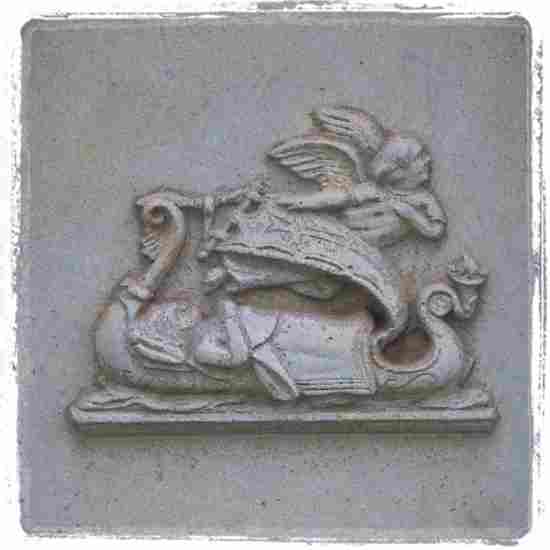Thank you, readers!
If you’ve been following my series on the meaning of historic cemetery symbols, then you know each week I share a quick explanation for that week’s graveyard symbol.
In the book that I’m writing, however, which is a Field Guide to Cemetery Symbolism, I dive much deeper into the meanings behind each symbol. I also learn a lot from the conversations that each of these posts spark – either from blog commenters here, replies on Twitter, and the emails that I’ve been getting.
So, I wanted to give a hearty shout out to all the readers out there who are helping to expand my knowledge on the topic of historic graveyards and cemetery symbols. Thank you so much!
I appreciate you all!

What does *this* boat represent on a headstone?
Today’s post zeroes in on the meaning behind a specific type of boat – the one you see in the photo above. (Future posts will continue to explore the much larger topic of sailing vessels, in general.)
Oftentimes, a ship represents Christianity and the church. It can also simply indicate a life on the sea, as a fisherman or sailor. In the photo you see above, the boat refers to ancient Greek mythology rather than Christianity.
The angel of death seen towing the body of the deceased “to the other side” is none other than the legendary ferryman, Charon. (By the way, it’s acceptable to pronounce the “ch” in Charon as either a “sh,” “ch,” or “k.” I learned to say it with a hard “k” sound, but how you say it is up to you!) The body of water that Charon is crossing is the River Styx, which separates the living from the dead.
Even if you’re not up on ancient Greek mythology, the name “Charon” may ring a bell with you because earlier this year when NASA’s New Horizons probe flew by the planet Pluto, astronomers learned a lot about Pluto’s moon, Charon.
Wondering why is Pluto’s moon named after that mythological ferryman? Because the ancient Greeks associated Pluto with the Underworld. As for how that association came about to begin with, I really don’t know, but I’ll ask the next ancient Greek I bump into! (Or, if any of you know, please tell me in a comment below!)
Field Guide to Cemetery Symbolism:
I am currently writing a field guide to historic cemetery symbolism. Each Tuesday, I share a small snippet from my upcoming book. It’s my goal to create a handy-dandy pocket guide for taphophiles, genealogists, ghost hunters, and anyone else interested in the historic graveyard symbols that have become forgotten over the years.
Which symbols are you curious about?
Let me know in the comments if there is a certain symbol that you are curious about. Also, if you would like to know when the cemetery symbolism guide is available for purchase, scroll down and sign up for my newsletter! I look forward to hearing from you!
Want to read more like this?

To read about more weird, offbeat, and overlooked places, check out my best-selling travel guide:
UNEXPECTED TEXAS: Your Guide to Offbeat & Overlooked History, Day Trips & Fun Things to do near Dallas & Fort Worth

For ghost hunting hot spots, check out my best-selling travel guide to haunted places:
PARANORMAL TEXAS: Your Travel Guide to Haunted Places near Dallas & Fort Worth

For a strange-but-true tale of Texas history, check out this bizarre piece of West Texas history:
The Lynching of the Santa Claus Bank Robber
Hey, you! Want to come along for the ride?

FREE WEEKLY NEWSLETTER: For updates on my offbeat travels, books, & other fun stuff (such as postcards from the road!) subscribe to my newsletter using the form below. Each week, I’ll let you know the Historic Cemetery Symbol of the Week, who Teal Gray & I are interviewing on our show that night, and any other fun or interesting news. You can also mix & mingle with me by clicking this link & “liking” my Facebook Author Page:
Be First to Comment